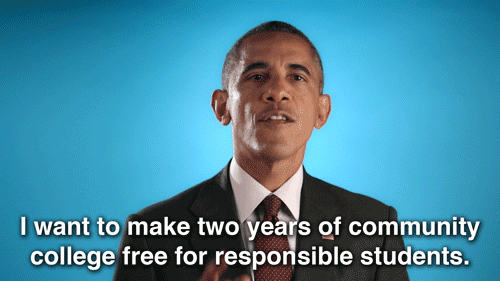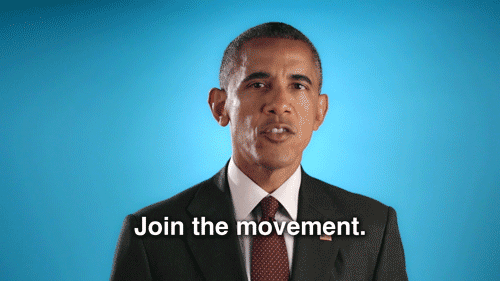Things Programmers Shout #181
Things Programmers Shout #181
“I just have to finish this one last thing……..aaaaaaandddd it’s 3am.” //submitted by anonymous
More Posts from R3ds3rpent and Others



Join the movement to make two years of community college as free and universal as high school is today at HeadsUpAmerica.us/Act.

A world of languages - and how many speak them
by Alberto Lucas López, SCMP Graphic
Each language represented within black borders and then provide the numbers of native speakers (in millions) by country. The colour of these countries shows how languages have taken root in many different regions.
Keep reading

Görseli zaten paylaşmıştık ama Atmel de her gün ürünümüzü paylaşmıyor :) #atmel #tinylab #arduino #indiegogo by robotistan @ http://ift.tt/1Pea7r2
mapsontheweb: Electoral College 2030 (based on projections). In 2030 politics cultural mores will be slanted towards the taste of the Sunshine belt states. Get the implications?


(Image caption: The prefrontal cortex connects to a very specific region of the brainstem (the PAG) through prefrontal cortical neurons: those labeled in purple directly project to the PAG and control our instinctive behaviours. Credit: EMBL/Livia Marrone)
Neural connection keeps instincts in check
From fighting the urge to hit someone to resisting the temptation to run off stage instead of giving that public speech, we are often confronted with situations where we have to curb our instincts. Scientists at EMBL have traced exactly which neuronal projections prevent social animals like us from acting out such impulses. The study, published online in Nature Neuroscience, could have implications for schizophrenia and mood disorders like depression.
“Instincts like fear and sex are important, but you don’t want to be acting on them all the time,” says Cornelius Gross, who led the work at EMBL. “We need to be able to dynamically control our instinctive behaviours, depending on the situation.”
The driver of our instincts is the brainstem – the region at the very base of your brain, just above the spinal cord. Scientists have known for some time that another brain region, the prefrontal cortex, plays a role in keeping those instincts in check (see background information down below). But exactly how the prefrontal cortex puts a break on the brainstem has remained unclear.
Now, Gross and colleagues have literally found the connection between prefrontal cortex and brainstem. The EMBL scientists teamed up with Tiago Branco’s lab at MRC LMB, and traced connections between neurons in a mouse brain. They discovered that the prefrontal cortex makes prominent connections directly to the brainstem.
Gross and colleagues went on to confirm that this physical connection was the brake that inhibits instinctive behaviour. They found that in mice that have been repeatedly defeated by another mouse – the murine equivalent to being bullied – this connection weakens, and the mice act more scared. The scientists found that they could elicit those same fearful behaviours in mice that had never been bullied, simply by using drugs to block the connection between prefrontal cortex and brainstem.
These findings provide an anatomical explanation for why it’s much easier to stop yourself from hitting someone than it is to stop yourself from feeling aggressive. The scientists found that the connection from the prefrontal cortex is to a very specific region of the brainstem, called the PAG, which is responsible for the acting out of our instincts. However, it doesn’t affect the hypothalamus, the region that controls feelings and emotions. So the prefrontal cortex keeps behaviour in check, but doesn’t affect the underlying instinctive feeling: it stops you from running off-stage, but doesn’t abate the butterflies in your stomach.
The work has implications for schizophrenia and mood disorders such as depression, which have been linked to problems with prefrontal cortex function and maturation.
“One fascinating implication we’re looking at now is that we know the pre-frontal cortex matures during adolescence. Kids are really bad at inhibiting their instincts; they don’t have this control,” says Gross, “so we’re trying to figure out how this inhibition comes about, especially as many mental illnesses like mood disorders are typically adult-onset.”

The U.S. is increasing its attacks on sprawling ISIS oil fields in eastern Syria. https://t.co/PZyFcdonkd
Source: twitter / nytgraphics

Guys, you need to check this—-DIY Circuit Board Table Decor
DIY USB Smartcard Lock (keyboard/mouse lock) controlled by phone-cards (by pcbheaven)
Project Site: Here

pew pew pew


-
 deepfriedaphobes liked this · 6 years ago
deepfriedaphobes liked this · 6 years ago -
 asdfghjglj-blog liked this · 8 years ago
asdfghjglj-blog liked this · 8 years ago -
 myexplodingcat liked this · 8 years ago
myexplodingcat liked this · 8 years ago -
 xenofar liked this · 8 years ago
xenofar liked this · 8 years ago -
 hunterexehunter liked this · 9 years ago
hunterexehunter liked this · 9 years ago -
 kunabee reblogged this · 9 years ago
kunabee reblogged this · 9 years ago -
 kunabee liked this · 9 years ago
kunabee liked this · 9 years ago -
 iamveryretarded liked this · 9 years ago
iamveryretarded liked this · 9 years ago -
 headstowardeternity liked this · 9 years ago
headstowardeternity liked this · 9 years ago -
 reblogsbyjopro-blog reblogged this · 9 years ago
reblogsbyjopro-blog reblogged this · 9 years ago -
 mindthecactuses reblogged this · 9 years ago
mindthecactuses reblogged this · 9 years ago -
 anneluciaf reblogged this · 9 years ago
anneluciaf reblogged this · 9 years ago -
 cjlogancelestia-blog reblogged this · 9 years ago
cjlogancelestia-blog reblogged this · 9 years ago -
 icepool liked this · 9 years ago
icepool liked this · 9 years ago -
 mindstormer7 liked this · 9 years ago
mindstormer7 liked this · 9 years ago -
 arnim liked this · 9 years ago
arnim liked this · 9 years ago -
 rachd0213 liked this · 9 years ago
rachd0213 liked this · 9 years ago -
 godfuckingdamit reblogged this · 9 years ago
godfuckingdamit reblogged this · 9 years ago -
 crazedmicrobiologist reblogged this · 9 years ago
crazedmicrobiologist reblogged this · 9 years ago -
 monkeyinginquests liked this · 9 years ago
monkeyinginquests liked this · 9 years ago -
 crabby-hermit-casey-blog liked this · 9 years ago
crabby-hermit-casey-blog liked this · 9 years ago -
 athenaxvio reblogged this · 9 years ago
athenaxvio reblogged this · 9 years ago -
 athenaxvio liked this · 9 years ago
athenaxvio liked this · 9 years ago -
 aubade-eidolon reblogged this · 9 years ago
aubade-eidolon reblogged this · 9 years ago -
 aubade-eidolon liked this · 9 years ago
aubade-eidolon liked this · 9 years ago -
 thecodeddddd liked this · 9 years ago
thecodeddddd liked this · 9 years ago -
 irradiated-narwhals liked this · 9 years ago
irradiated-narwhals liked this · 9 years ago -
 wnorton1911 liked this · 9 years ago
wnorton1911 liked this · 9 years ago -
 improbable-implosions reblogged this · 9 years ago
improbable-implosions reblogged this · 9 years ago -
 lehtlechristina-blog liked this · 9 years ago
lehtlechristina-blog liked this · 9 years ago -
 marooned-in-reality liked this · 9 years ago
marooned-in-reality liked this · 9 years ago -
 millerflintstone liked this · 9 years ago
millerflintstone liked this · 9 years ago -
 mylastoneleftsmthing2bedesired liked this · 9 years ago
mylastoneleftsmthing2bedesired liked this · 9 years ago -
 redmannequin reblogged this · 9 years ago
redmannequin reblogged this · 9 years ago
Machine Learning, Big Data, Code, R, Python, Arduino, Electronics, robotics, Zen, Native spirituality and few other matters.
107 posts